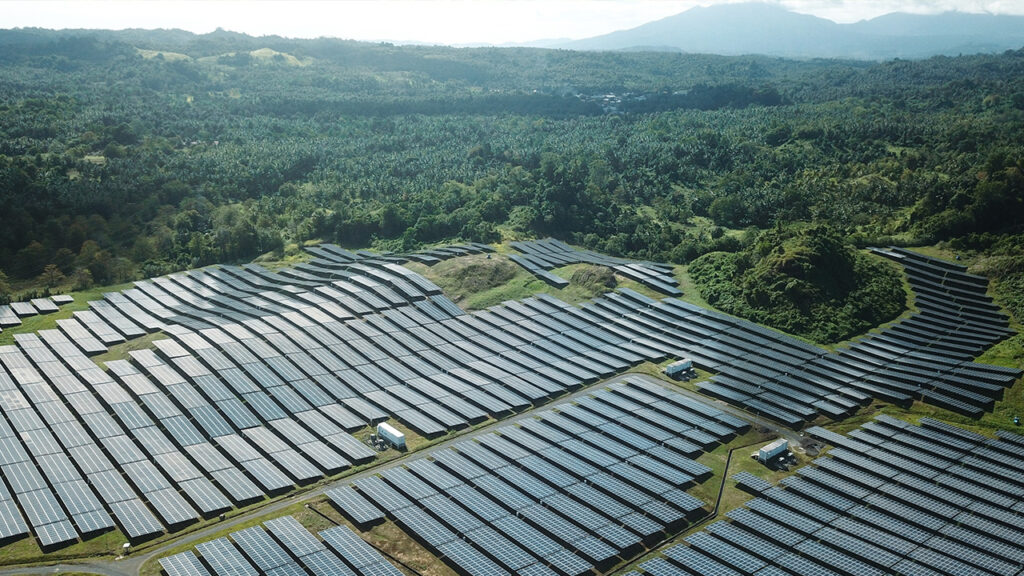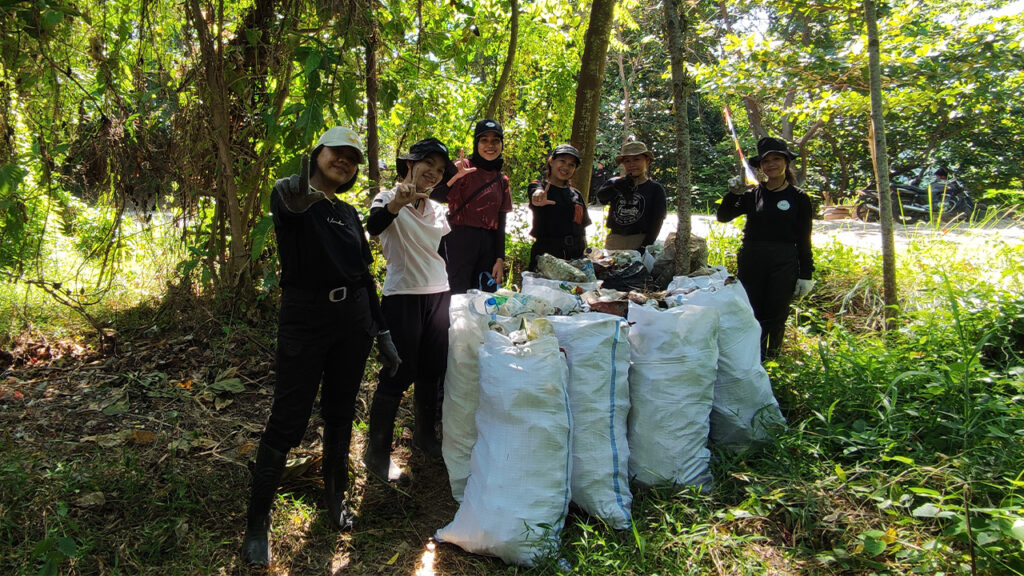In the tropical paradise of North Minahasa, an extraordinary transformation is taking place. Located near the equator, this region in Indonesia basks under the radiant rays of the sun. By harnessing this shining gift from nature alongside its commitment to sustainability, North Minahasa has successfully used its geographical advantage to unlock a solar revolution, lighting the way for a more sustainable future.
Like many other regions in Indonesia, North Minahasa used to rely heavily on finite fossil fuels. But with depleting coal, oil, and natural gas resources, all of which cause some level of environmental harm, North Minahasa realised the urgent need for change. And so, the region embarked on a bold journey towards sustainable development by shifting to more renewable energy. This shift marked a turning point in their energy landscape, heralding the rise of solar power as a clean and renewable alternative.

Aligned with Indonesia’s net zero target that is set for 2060, North Minahasa breathes life into its sustainable energy vision through the awe-inspiring solar power plant in Likupang, an area in the regency that receives the most sunlight, as explained by Mr. Joune J. E. Ganda, Regent of North Minahasa:
“Likupang stood out as the perfect choice, offering a spacious and safe zone for [the solar power plant] development. According to our research, Likupang boasts optimal light conditions from the sun to establish a solar power infrastructure. Given Likupang’s trajectory towards becoming a place for sustainable tourism, this solar power plant will surely become the first step towards the transformative and sustainable journey ahead.”
 Spanning an impressive 29 hectares and boasting a capacity of 15MWp, this extraordinary project proudly holds the title of the largest solar power plant in Indonesia to date. Its inception in 2017 marked the beginning of a collaborative effort between the North Minahasa Regency Government and Vena Energy, an independent power producer, toward a cleaner future. After a year and a half in development, the power plant emerged as a groundbreaking solution with its seamless energy transmission capabilities. Its advanced technology generates and delivers electricity with minimal waste, ensuring that the plant operates at its highest capacity. Furthermore, the power plant directly connects its electricity production system to the national electricity network, enhancing efficiency and enabling seamless integration of renewable energy into the national grid.
Spanning an impressive 29 hectares and boasting a capacity of 15MWp, this extraordinary project proudly holds the title of the largest solar power plant in Indonesia to date. Its inception in 2017 marked the beginning of a collaborative effort between the North Minahasa Regency Government and Vena Energy, an independent power producer, toward a cleaner future. After a year and a half in development, the power plant emerged as a groundbreaking solution with its seamless energy transmission capabilities. Its advanced technology generates and delivers electricity with minimal waste, ensuring that the plant operates at its highest capacity. Furthermore, the power plant directly connects its electricity production system to the national electricity network, enhancing efficiency and enabling seamless integration of renewable energy into the national grid.
With its remarkable engineering, the Likupang power plant has been a catalyst for positive change. Since 2019, the plant has provided clean and reliable electricity to approximately 15,000 local households, while simultaneously reducing carbon emissions by an impressive 20.01 kilotons. With this significant stride towards renewable energy, the Likupang solar power plant sets the stage for supporting the development of the region’s social-economic zone, ushering in a future fueled by sustainable power. As shared by Dr. Ir. Wiske Rotinsulu, SP, MES, a lecturer at the Faculty of Agriculture in Sam Ratulangi University:
“10 years ago, we grappled with a disconcerting electricity crisis, enduring up to 4-8 hours of daily outages. This was a glaring embarrassment, given that we have abundant natural resources [the sun] that remained untapped. Today, with the presence of the solar power plant, its impact reaches beyond the daily lives of our citizens, offering a getaway for diverse industrial actors to flourish, as electricity is no longer a barrier for us.”
For locals, the Likupang power plant also gives them new work opportunities that offer stable income, as told by Mr. Ageng Afief, a representative from the Likupang community:
“One of the enduring concerns among locals has been the absence of secure employment opportunities, due to [the locals’] dependence on agriculture and fishing, which often yields unpredictable incomes. With the establishment of the Likupang solar power plant, the community has not only gained enhanced access to consistent electricity but also witnessed the emergence of employment prospects. This development has opened up a stable and reliable source of income for our local workforce.”
Alongside the solar power plant, North Minahasa has seamlessly integrated an array of hydroelectric power plants throughout its region. This harmonious partnership with Likupang’s solar infrastructure has propelled North Minahasa to have an impressive 40% of its energy supply now sourced from renewable sources. Yet, this achievement is just a stepping stone rather than a pinnacle, as elaborated by Dr. Ir. Wiske Rotinsulu:
“Even before the solar power plant, we had already embraced the hydroelectric power plants in our region. Now, with the solar plant in place, we’re also in the process of planning a community-driven biogas power project. This initiative involves sourcing the needed materials from within our local community. It’s all part of our ongoing dedication to a sustainable and self-sufficient energy future.”
 Beyond renewable energy, North Minahasa’s commitment to sustainable development extends to embracing a circular system, implementing eco-friendly practices and infrastructure across various sectors.
Beyond renewable energy, North Minahasa’s commitment to sustainable development extends to embracing a circular system, implementing eco-friendly practices and infrastructure across various sectors.
In agriculture, the region effectively manages livestock manure for biogas production—providing renewable energy while reducing emissions—and adopts eco-friendly techniques for fertiliser use, minimising environmental impact and promoting soil health. In waste management, organic waste is being converted into valuable resources, reducing landfill waste and greenhouse gas emission, and the region’s industrial wastewater undergoes an aerobic treatment to maintain clean and unpolluted water sources. On the city streets, sustainability efforts can also be seen through energy-efficient streetlights that are powered partly by the Likupang solar power plant. Lastly, the region also has designated bike lanes that encourage alternative modes of travel and reduce reliance on fossil-fuel powered cars.
 By implementing these innovative practices in various industries, North Minahasa has established a symbiotic relationship between different sectors, fostering a strong mentality of resource optimisation and environmental conservation. Along with its circular system, the North Minahasa government also showcased their commitment to climate finance with energy audit funding, donor proposals for energy-efficient streetlights, and a sustainable tourism funding plan for the Likupang social-economic zone. These proactive initiatives reflect their dedication to addressing climate change and securing financial support for key projects.
By implementing these innovative practices in various industries, North Minahasa has established a symbiotic relationship between different sectors, fostering a strong mentality of resource optimisation and environmental conservation. Along with its circular system, the North Minahasa government also showcased their commitment to climate finance with energy audit funding, donor proposals for energy-efficient streetlights, and a sustainable tourism funding plan for the Likupang social-economic zone. These proactive initiatives reflect their dedication to addressing climate change and securing financial support for key projects.
Collaboration is also a key factor in developing Likupang as a green and sustainable social-economic zone. Mr. Joune J. E. Ganda and Sandiaga Uno, the Minister of Tourism and Creative Economy have recently discussed plans on how to further develop sustainable tourism in Likupang. In terms of global connections, Mr. Joune J. E. Ganda also emphasises how North Minahasa membership in the Global Covenant of Mayors for Climate & Energy (GCoM) has inspired the region in building a more sustainable future:
“Our partnership with GCoM has inspired us to preserve our ecological balance, particularly in reducing our carbon footprints. Furthermore, this realisation has led us in our development of the Likupang Special Economic Zone, which underscored the importance of a sustainable foundation, not solely [focusing just] at constructing infrastructure.
This strategic approach ensures that our natural resources can be harnessed without imposing negative impacts on the environment, so it can be a lasting asset for future generations to cherish. Ultimately, GCoM has kindled an awareness that reaches beyond the present, motivating us to turn challenges into lasting advantages.”
North Minahasa’s remarkable journey towards sustainability and renewable energy has set a precedent for embracing clean energy solutions that can transform communities and drive sustainable progress. As the Likupang solar power plant illuminates the lives of local residents, it also shines a light on the path toward a brighter, greener, and more sustainable future.
—
Written by: Devina Angelica Larosa
Reviewed by: Asih Budiati




